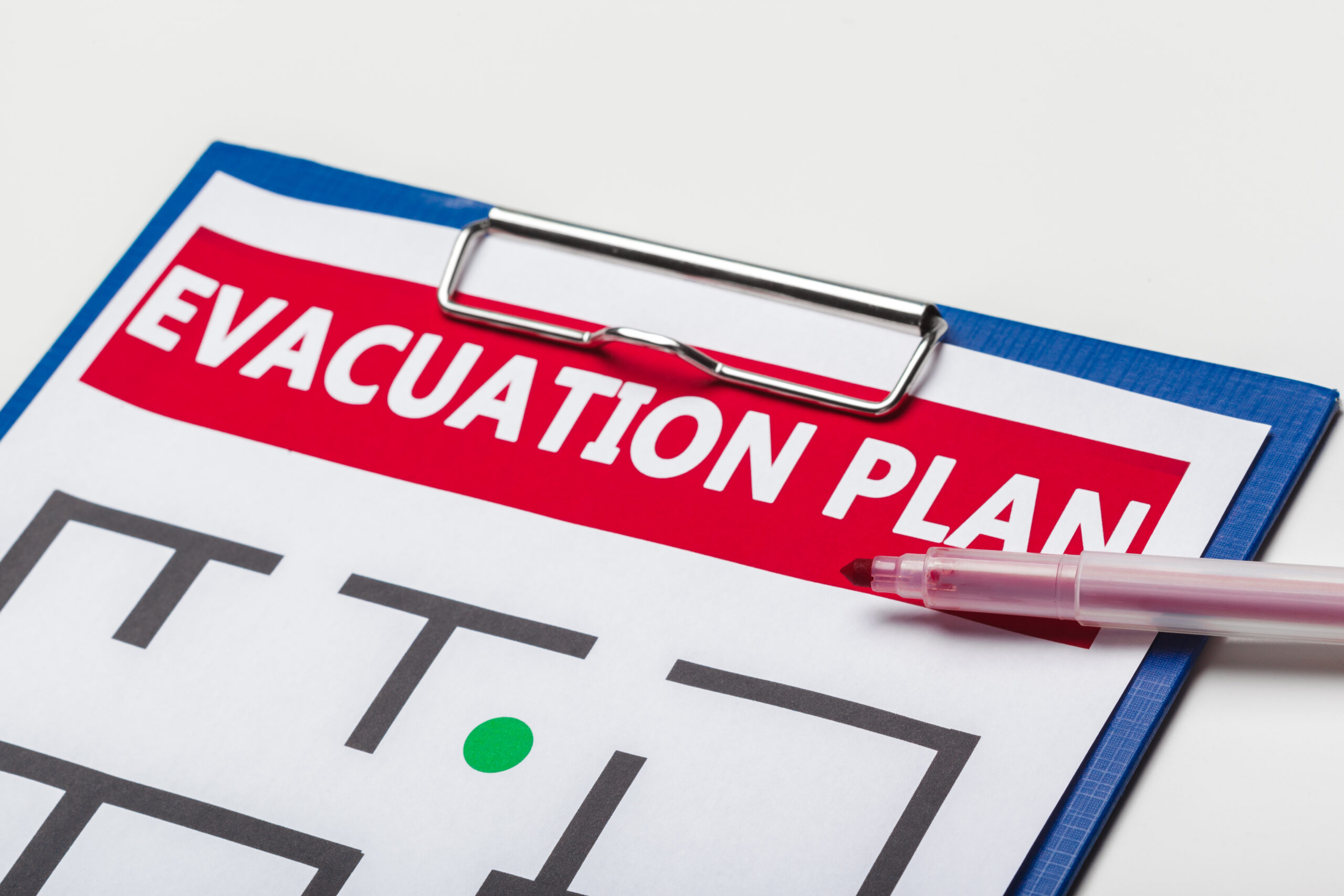While OSHA does not require that an actual fire evacuation be practiced, it does require an annual test of the alert method and a review of several items so that response and evacuation, if ever necessary, is safe and orderly. These reviews are sometimes referred to as a conference-type fire drill and should include all employees of the workplace. The following checklist may be used as a basis for your annual review, with the addition of any other site-specific information that you would like to convey to staff.
Please note: An actual evacuation drill is required by some accrediting agencies.
☐ Fire Detection – Local fire regulations will govern the specific fire and smoke detection devices that are required to be installed. These devices should be tested as required to assure proper operation.
☐ Alert Method – Inform employees of the method that is to be used to alert others to a fire emergency. This may include a fire alarm, voice announcement (i.e., public address) system, or direct voice communication if the workplace employs 10 or fewer staff members. Ensure proper operation of the alert method, if applicable.
☐ Emergency Reporting – Review with employees the telephone number that should be used to summon emergency response personnel. This may be to dial 911 or use an alternate emergency number. This number should be posted on the employee bulletin board.
☐ Fire Extinguishers – Extinguishers should be selected to meet local fire codes and according to the extinguishing methods noted on safety data sheets of products used and stored in the workplace. OSHA allows employers to designate employees who will be expected to fight small fires, or to require all employees to evacuate immediately. If certain employees will be designated to fight small fires, they must be trained on proper use and locations of extinguishers.
☐ Inspection – Fire extinguishers must be visually inspected monthly to ensure the units are charged, and a maintenance inspection performed annually. Annual inspections should be performed by a professional fire protection company or local fire marshall staff to verify that the unit is operational. If a unit does not pass inspection, it must be repaired or replaced.
☐ Evacuation Map – OSHA requires that at least one evacuation map be posted prominently. The map must include evacuation routes, locations of exits and fire extinguishers, and a designated assembly point outside the facility where employees, patients, and visitors can be accounted for. Some local building codes require more than one evacuation map.
☐ Evacuation Responsibilities – Discuss who will be responsible for assisting patients and other visitors to evacuate safely and to close doors and windows to help contain the fire (if time allows). Someone should be designated to locate themselves where they can safely direct fire-fighting personnel to the location of the fire, and another person at the assembly point should take a head count of employees and patients/visitors that were in the facility. If any person is missing, their name and last known location should be passed on to emergency response personnel.
☐ Emergency Preparedness Training – Ensure that employees have completed required Emergency Preparedness training (provided in the July Compliance Training module).



